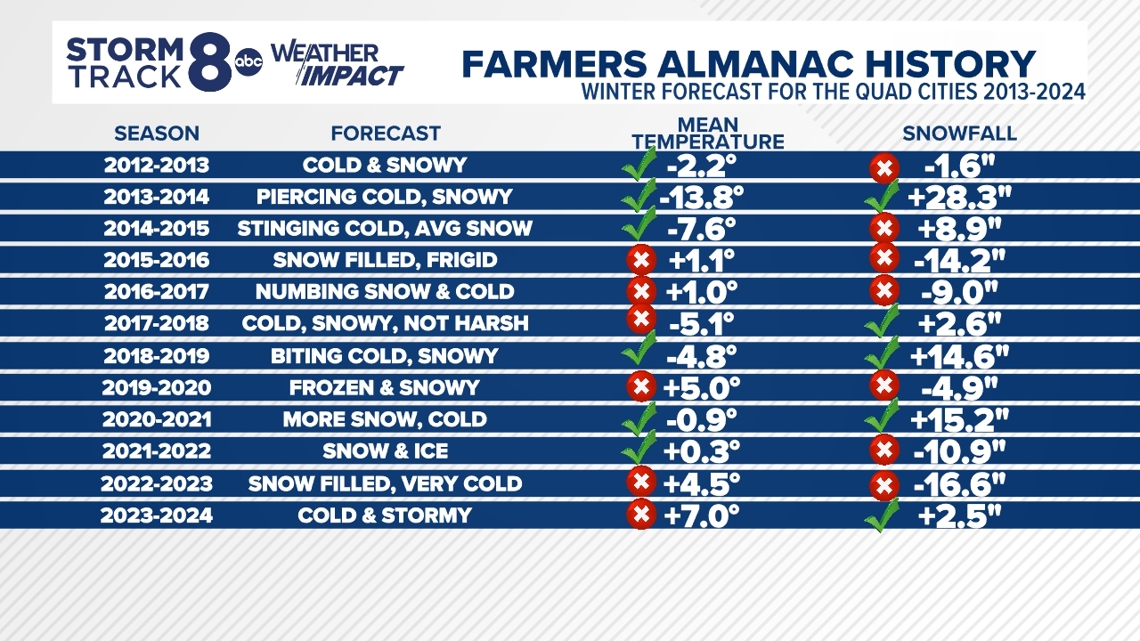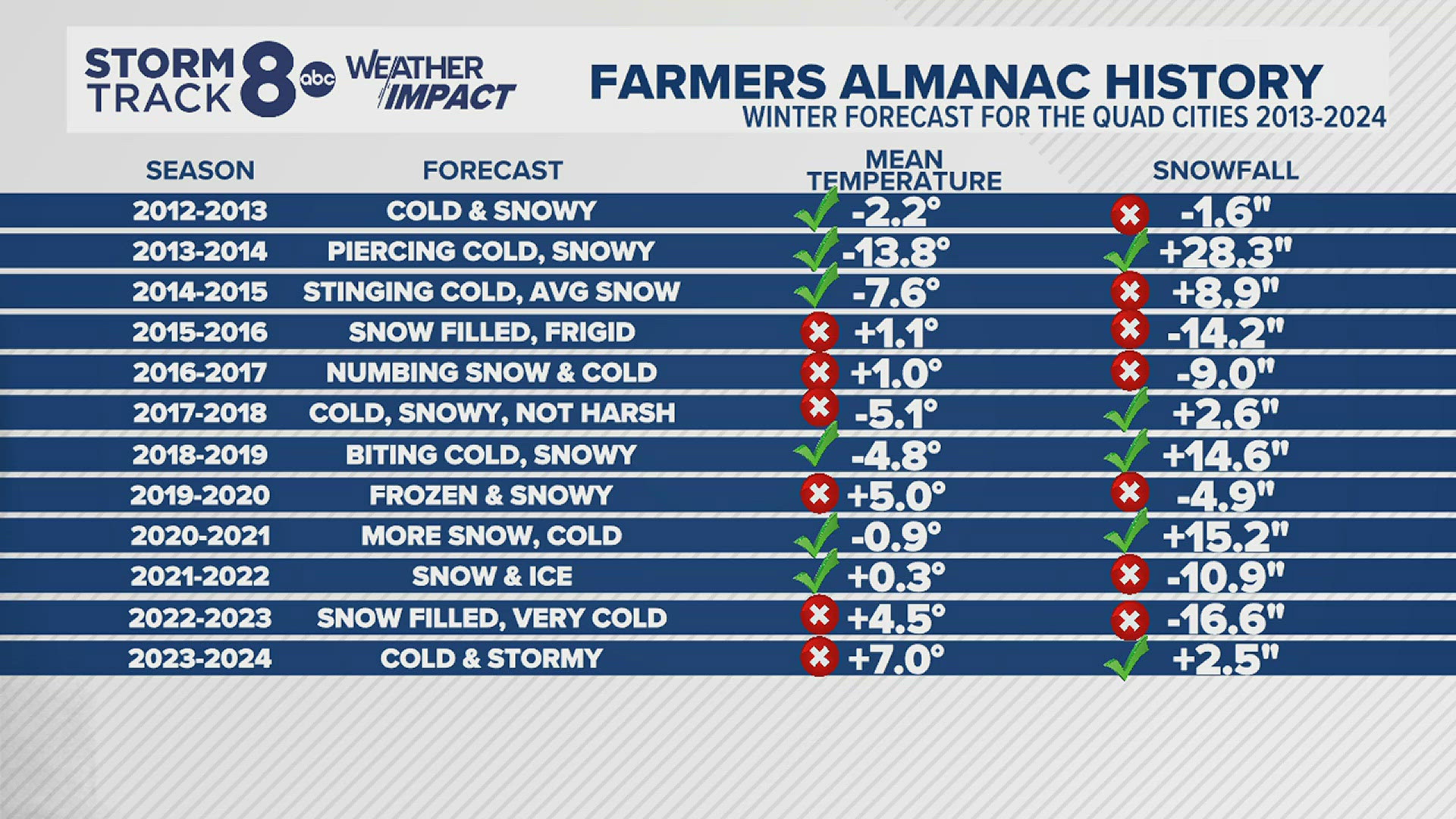MOLINE, Ill. — The Farmers' Almanac has released its much-anticipated winter outlook for the upcoming season. Each year the outlook draws hundreds of thousands of interactions on social media. So, just how accurate is this outlook, especially for the Quad Cities? Let's dig in and find out.
For the data, we went back to the 2012 to 2013 winter season up until our most recent winter, 2023-2024. Using their own words/predictions from each winter's outlook, paired up with actual winter season data from the National Weather Service in the Quad Cities, we were able to figure out the accuracy of their forecast.
What the data showed
Whatever method you use, forecasting winter can be extremely challenging. Factors like the strength of Arctic air, and long-term patterns like El Nino and La Nina can throw a wrench into things. Snow is even more difficult to forecast.
Since the 2012-2013 winter season, the Farmers' Almanac has an accuracy rate right around an even 50% when it comes to forecasting winter season temperatures. Essentially, a coin flip. Snow on the other hand has proven much more difficult, with an accuracy of only around 42%.


Some of the most recent big misses include our most recent winter, 2023-2024, where cold weather was forecast. The average winter temperature ended up being a whopping 7.0 degrees warmer than average. The snowfall forecast verified in that we accumulated a surplus of 2.5 inches for the season.
Winter of 2022-2023 also wasn't very kind to the Farmers' Almanac, when a "snow-filled and very cold" winter was forecast. Temperatures again ended up warmer than average and the snow fell short. More than a foot short!
Bottom line: Don't put a ton of stock into long-range seasonal forecasts. As you can see, there is a lot of variability from season to season. Given the unique location of the Midwest, far away from any major body of water, like an ocean, the weather as we know it can change on a dime. Out of the twelve years above, the forecast was completely accurate only three times, or 25% of the time.

